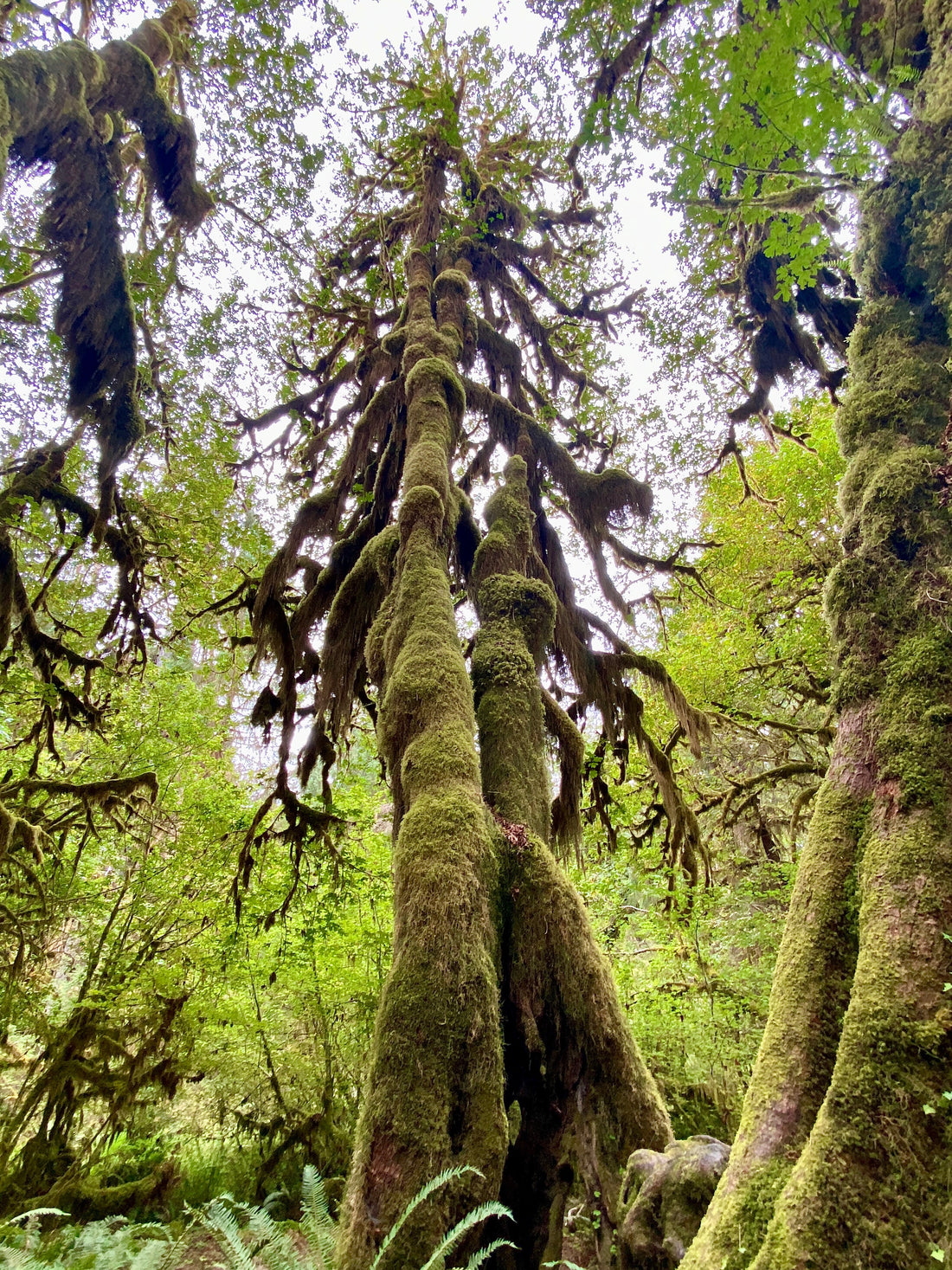
Embracing the Giants: A Guide to Trees in Western Washington
Share
Photo Credit: Your Image Source
As a fellow dendrophile, there's nothing quite like the serene embrace of Washington state's forests. Western Washington, with its lush landscapes ranging from the misty Hoh Rainforest to the towering peaks of Mt. Rainier (Tahoma) and the Cascades, is a haven for tree enthusiasts. Let's embark on a journey to discover the magnificent trees that make this region so special, learn how to identify them, and appreciate their vital role in our ecosystem.
The Majestic Trees of Western Washington
1. Douglas-Fir (Pseudotsuga menziesii)
Identification Tips:
- Needles: Soft, flat needles with a pointed tip, arranged spirally around the twig.
- Cones: Distinctive cones with protruding three-pointed bracts resembling mouse tails.
- Bark: Thick, reddish-brown bark with deep furrows on mature trees.
Where to Find: Abundant throughout western Washington, especially in the lower elevations of the Cascades and around Mt. Rainier.
Learn More: USDA Forest Service - Douglas-Fir
https://www.fs.usda.gov/detail/hlcnf/landmanagement/resourcemanagement/?cid=stelprdb5378436
2. Western Hemlock (Tsuga heterophylla)
Identification Tips:
- Needles: Short, flat needles of unequal length, giving a feathery appearance.
- Cones: Small, oblong cones about 1 inch long.
- Bark: Thin, reddish-brown bark that becomes scaly with age.
Where to Find: Common in the Hoh Rainforest and moist coastal areas, often forming dense stands. This is also the official Washington State tree.
Learn More: National Park Service - Western Hemlock
https://www.nps.gov/places/old-mine-tour-western-hemlock.htm
3. Western Redcedar (Thuja plicata)
Identification Tips:
- Leaves: Scale-like leaves in opposite pairs, forming flat sprays.
- Cones: Small, rosebud-shaped cones about 0.5 inches long.
- Bark: Reddish-brown, stringy bark that peels in long strips.
Where to Find: Thrives in wet areas like the Hoh Rainforest and along riverbanks.
Learn More: British Columbia - Western Redcedar
4. Sitka Spruce (Picea sitchensis)
Identification Tips:
- Needles: Sharp, stiff needles that are four-sided and bluish-green.
- Cones: Cylindrical cones up to 4 inches long with thin, papery scales.
- Bark: Thin, scaly bark that flakes off easily.
Where to Find: Predominant in coastal areas, especially the Hoh Rainforest.
Learn More: Oregon State University - Sitka Spruce
https://blogs.oregonstate.edu/coastaltourism/sitka-spruce-picea-sitchensis-2/
5. Bigleaf Maple (Acer macrophyllum)
Identification Tips:
- Leaves: Huge leaves up to 12 inches across with five deeply incised lobes.
- Bark: Gray to reddish-brown bark with furrows on older trees.
- Seeds: Paired winged seeds called samaras.
Where to Find: Common in moist forests and along streams throughout western Washington.
Learn More: Washington Native Plant Society - Bigleaf Maple
https://www.wnps.org/native-plant-directory/226-acer-macrophyllum
Special Places to Explore
The Hoh Rainforest
Located in the Olympic National Park, the Hoh Rainforest is one of the finest examples of a temperate rainforest in the world. Here, trees like Sitka spruce and western hemlock reach staggering heights, draped in lush mosses and ferns.
Visit: National Park Service - Hoh Rainforest
https://www.nps.gov/olym/planyourvisit/visiting-the-hoh.htm
Mt. Rainier National Park
Mt. Rainier's diverse ecosystems range from dense old-growth forests to alpine meadows. Douglas-fir and western redcedar dominate the lower elevations, offering a glimpse into ancient forest life.
Visit: National Park Service - Mt. Rainier
https://www.nps.gov/mora/index.htm
The Cascades
The Cascade Range offers a variety of habitats due to its varying elevations. From the wet western slopes to the drier eastern side, you can find a rich diversity of tree species.
Visit: National Park Service - Cascades
https://www.nps.gov/noca/index.htm
The Importance of Washington's Trees
These trees are not just towering figures in the landscape; they are vital to the environment and the economy. They provide habitat for wildlife, contribute to the carbon cycle, and support industries like timber and tourism.
Conservation Efforts
Protecting these forests ensures that future generations can enjoy their beauty and benefits. Organizations like the Washington Forest Protection Association work tirelessly to promote sustainable forestry practices.
Tips for Tree Identification in the Field
- Bring a Field Guide: Books like Trees of the Pacific Northwest can be invaluable.
- Observe the Habitat: Certain trees prefer specific environments.
- Look at Multiple Features: Leaves, bark, cones, and overall shape are all clues.
- Take Notes and Photos: Documenting your findings can help with later identification.
Conclusion
Western Washington's forests are a treasure trove of natural wonders. By learning to identify and appreciate these magnificent trees, we deepen our connection to the environment and become advocates for their preservation.
Let's continue to explore, educate, and inspire others to cherish these green giants that define the Pacific Northwest.
Feel free to share your experiences or ask questions in the comments below. Together, we can foster a community of tree enthusiasts dedicated to the beauty and health of Washington's forests.
Further Resources:
- Washington State Department of Natural Resources
- Washington Native Plant Society
